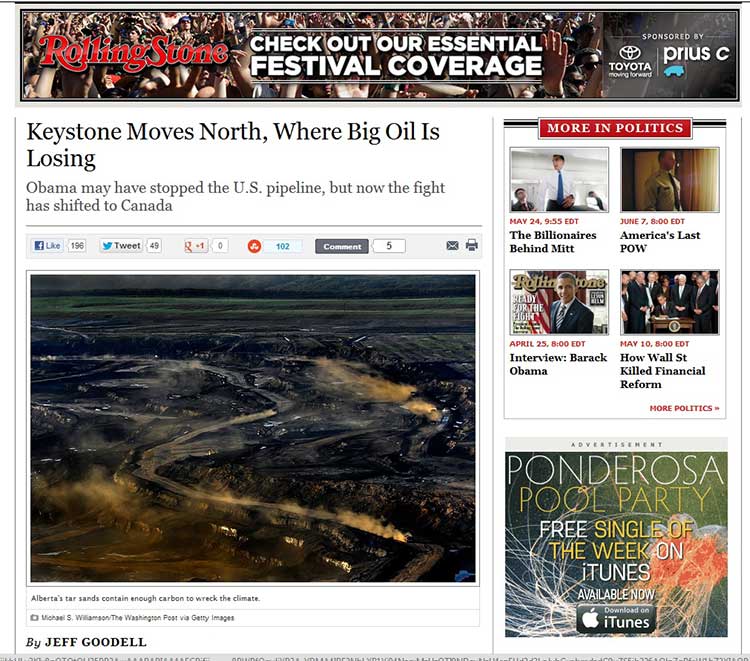The future of the Northern Gateway project is now completely in the hands of Prime Minister Stephen Harper’s cabinet.
Today, Friday, August 3, 2012, Environment Minister Peter Kent used the provisions of what the Harper government calls the Jobs, Growth and Long Term Prosperity Act (former Bill C-38) to set a final deadline for a report from the Northern Gateway Joint Review Panel on December 31, 2013 and reserve the final environmental decision for the Governor-in-Council.
Today’s move, in effect, is the final gutting of the Joint Review Process, making it irrelevant, since, as long suspected, the government will now make the decision on its own.
The Joint Review Panel no longer has the power to reject the Northern Gateway on environmental grounds, that is now solely up to the Harper cabinet. Once the Gateway project is approved, as expected, the NEB has been ordered to issue the approval certificate within seven days.
By releasing the news on a Friday afternoon before a holiday weekend, the Harper government spin doctors through Environment Minister Peter Kent have also pulled the classic government move of releasing bad news when it will least be noticed.
There is also the new agreement between the Ministry of Environment and the National Energy Board. The revised memorandum of agreement says:
The Governor in Council will make the decision on the environmental assessment (whether the project is likely to cause significant adverse environmental effects and if, so whether such effects are justified in the circumstances). The Governor in Council will decide, by order, whether the board should issue a certificate and will give reasons for the order.
Under the act, the NEB now has to file its environmental assessments within 543 days of the act coming into force, hence the imposed deadline.
If there are no excluded periods this would mean that the environmental assessment and report must be submitted no later than Dec. 31, 2013.
The final paragraph of Kent’s letter also says
If the Project is approved by the Governor in Council, the NEB will issue the certificate of public convenience and necessity within seven days of the Governor in Council’s order.
That’s a clear indication that the Harper government still intends at this point to fast track the Northern Gateway project.
Apart from giving the most environment unfriendly cabinet in Canadian history the decision power, most of the memorandum of agreement are legalistic changes necessary to bring the former agreement into compliance with the new law.
The environmental sections of the agreement, based on the amendments to the Environmental Assessment act have a couple of interesting points
any change that the project may cause in the environment, including any change it may cause in listed wildlife species as critical habitat or residences of that species….
Although the memo goes on to say
any change to the project that may be caused by the environment whether such change or effect occurs within or outside Canada
While this may be simply legalistic language, given the overall tone of the Harper government’s policy, especially the changes in the Fisheries Act that only protects fish habitat when it affects commercial species, one has to wonder if the emphasis on listed (that is threatened or endangered) species is again a narrowing of the criterion for approving the pipeline.
The second phrase is also ambiguous, seemingly to imply that the environment could be to blame for any problems the project may face. Opponents have long pointed out that the environmental conditions and risks such as geologic instability along the pipeline route and the heavy weather in the waters off British Columbia are factors that increase the danger of an oil spill event whether on land or sea. However, the new agreement presents an almost Orwellian scenario that would blame the environment, an “Act of God” in insurance terms, rather than the company or the government for any future disaster.
The main phrase in the agreement “whether such effects are justified in the circumstances” clearly indicates that the Harper government is fully prepared to ignore the environmental fallout of the Northern Gateway project and so the stage is set for a much wider political battle.
Peter Kent letter to JRP concerning the Northern Gateway Pipeline Project (pdf)
Amendment to the Agreement concerning the Joint Review of the Northern Gateway Pipeline Project (pdf)
Images from this gallery are available for purchase for personal, editorial and commercial use on Photoshelter. Simply click on the image above.
